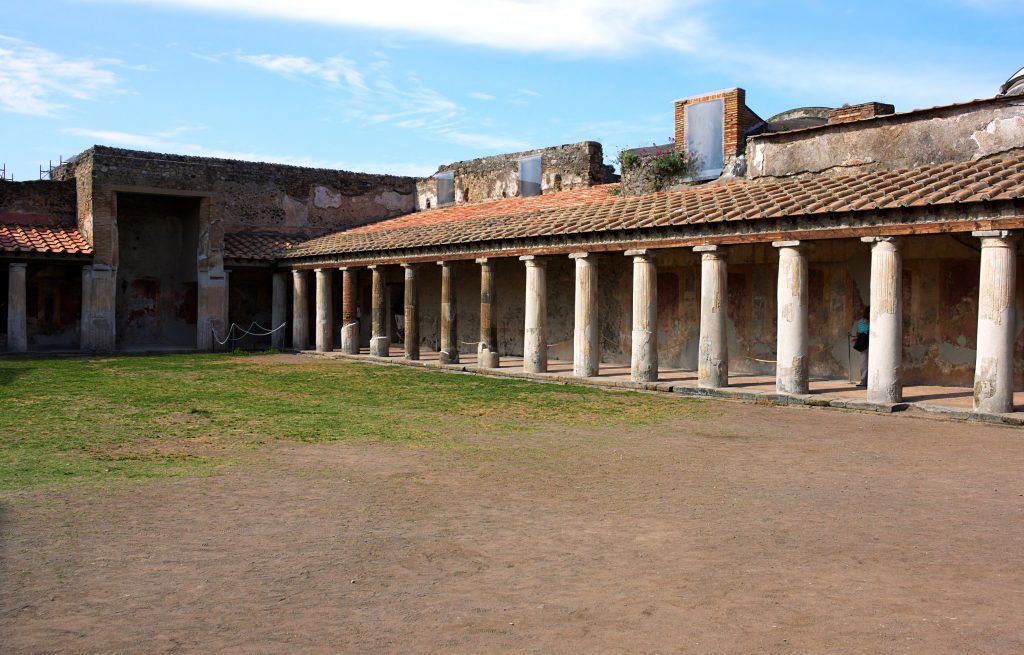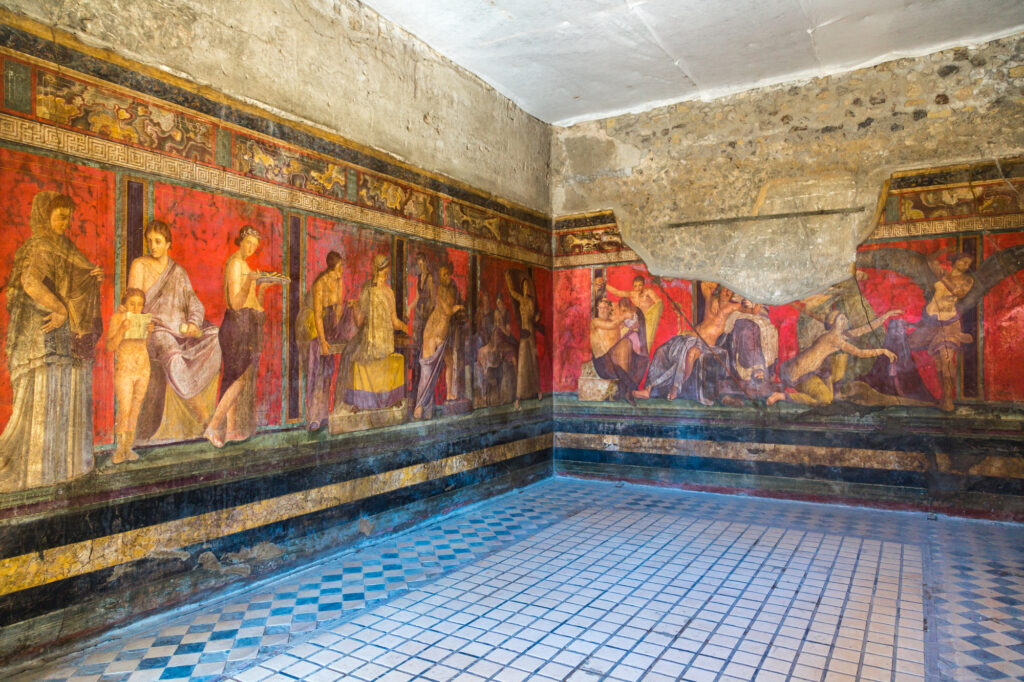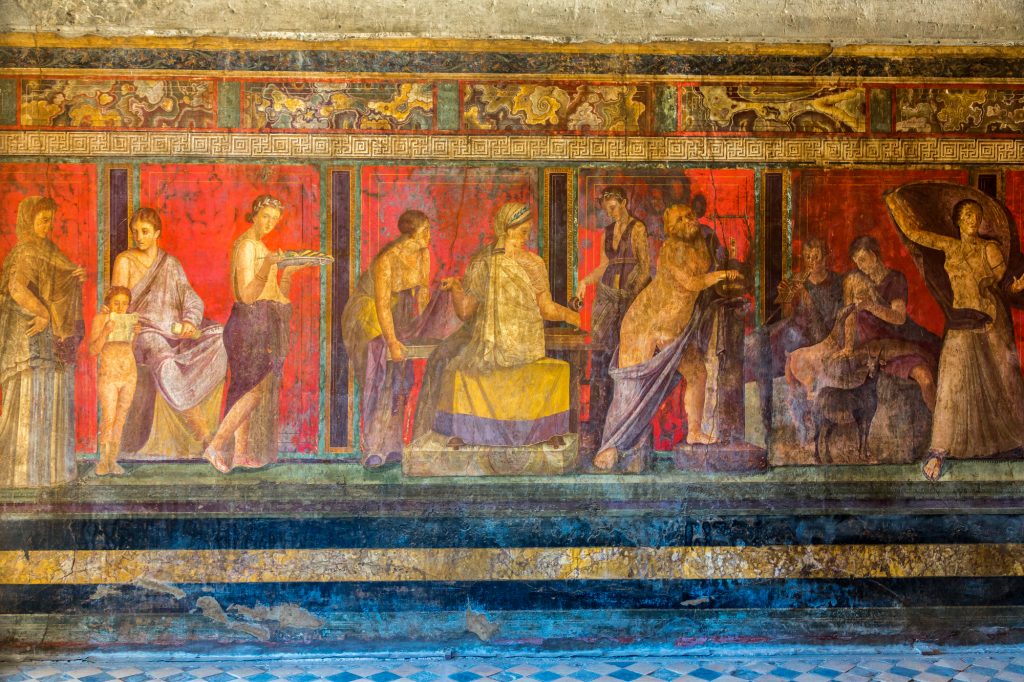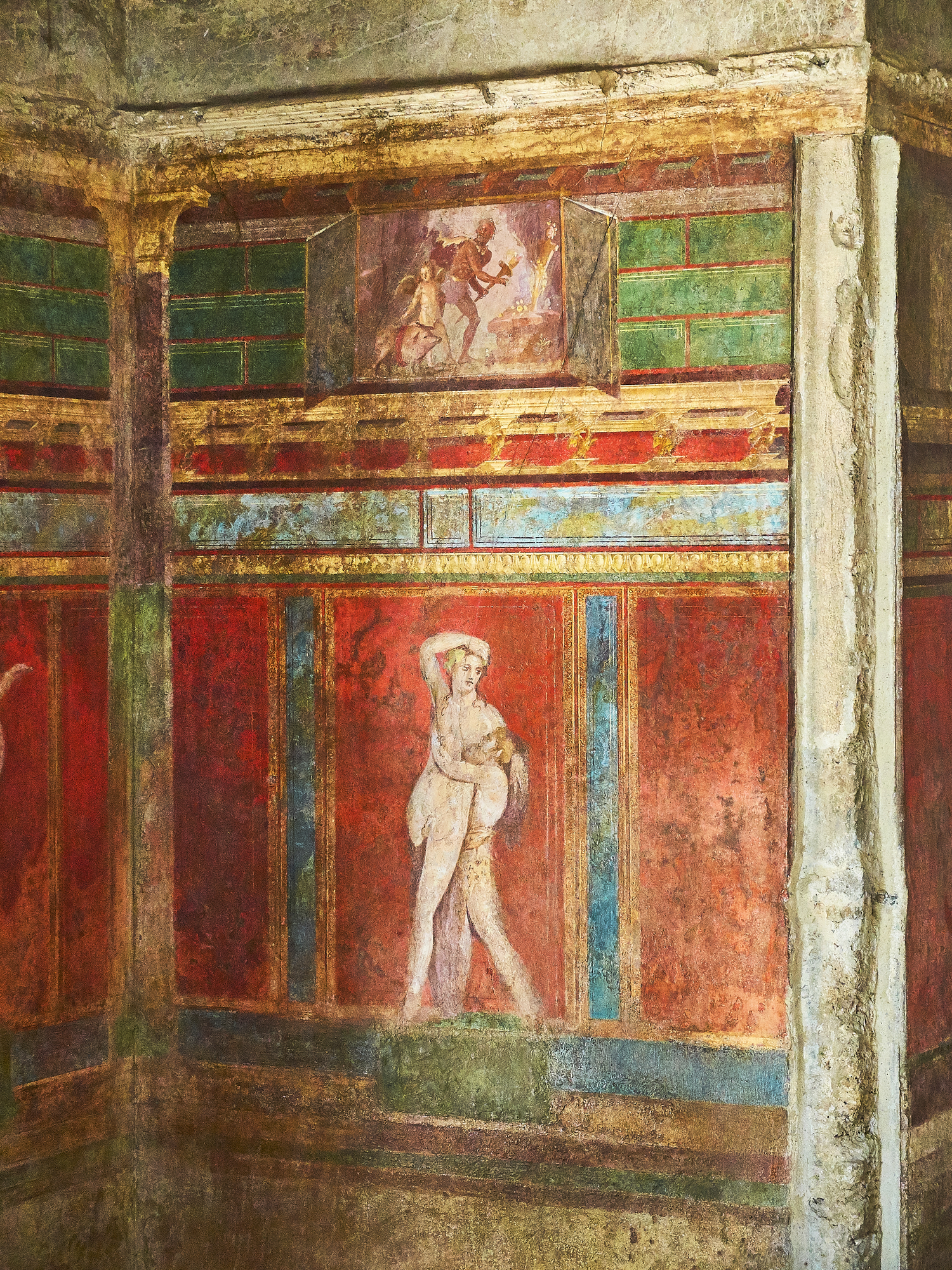The Villa of the Mysteries of Pompeii
The Villa of the Mysteries is located outside the walls of Pompeii to the north of the city, on a hillock that in ancient times enjoyed a splendid view directly over the Gulf of Naples.
![The Villa of the Mysteries in Pompeii isn't just marketing — it's an actual mystery, possibly showing part of an ancient wine-drinking cult (OC, info in comments) [5623x3749] : r/ArtefactPorn](https://i.redd.it/acz3xm3upbz81.jpg)
It remained buried along with the rest of the city of Pompeii for nearly 2,000 years under a thick blanket of ash and lapilli. When in 79 A.D. a violent and catastrophic eruption of Mount Vesuvius caused the destruction of many Vesuvian cities, including Pompeii.
The eruption was preceded by several premonitory signs, such as seismic tremors, fumaroles, and small earthquakes, but people at the time could not understand what was about to happen.
Over the course of two days, volcanic ash and stones poured over the city of Pompeii, burying houses, streets, and the people who lived there. The eruption was so violent and devastating that Pompeii remained buried under the ash until it was discovered in 1748.
Among these discoveries is precisely the Villa of the Mysteries, one of the most beautiful and richest villas in Pompeii.
The Villa
The villa initially had a residential character and was later transformed, after the earthquake of 62, into a rustic villa. Used for the production and sale of wine, with the installation of wine presses used for pressing grapes.
It is one of the largest and most luxurious dwellings in Pompeii. Famous above all for the wonderful paintings on the walls found in the triclinium area, from which the Villa of the Mysteries takes its name.
The structure of the Villa of Mysteries
The Villa rested on an embankment supported by a cryptoporticus with blind arcades, which was used in ancient times as a storage area. It was accessed via a side road and the entrance was located in the rustic area of the Villa, leading to the various servile rooms, such as the kitchen, bakery and oven.
The Villa of the Mysteries was immense with numerous cubiculae, a peristyle with sixteen columns, a major atrium without columns but finely decorated on the walls, a tablinum frescoed with black walls and small Egyptian-inspired paintings, and a veranda overlooking the sea.
But the most valuable area of the entire Villa was the triclinium (the dining room) overlooking the sea.

Frescoes Villa of the Mysteries
The triclinium of the Villa of the Mysteries in Pompeii is frescoed with a large painting covering all three walls of the room depicting a mystery ritual in ten sequences, 17 metres long and 3 metres high.
The central part of the painting features Dionysus together with his bride Ariadne. It has been assumed that the latter most probably depicts an initiation rite. While on the side walls are depicted fauns, maenads, female figures and winged figures engaged in the performance of certain rituals.


The findings
During the excavations, numerous artifacts were found, especially in the rustic part of the dwelling.
Including a winepress later reconstructed with a ram’s head that was used for pressing grapes. And the statue of Livia dressed as a priestess, now preserved in the Antiquarium.


Related Post
A shocking documentary proves that mermaids do exist
SHOCKING Revelation: Thuya, Mother of Queen Tiye, Was the Grandmother of Akhenaten and Tutankhamun—What Ancient Egyptian Secrets Did She Leave Behind?
Breaking News: Astonishing Discoveries at Karahan Tepe Confirm an Extraterrestrial Civilization is Hiding on Earth, and NO ONE Knows!
Breaking News: Researchers FINALLY Discover U.S. Navy Flight 19 After 75 Years Lost in the Bermuda Triangle!
NASA’s Secret Investigation: Uncovering the Astonishing Mystery of the UFO Crash on the Mountain!
Explosive UFO Docs LEAKED: Startling Proof That Aliens Ruled Ancient Egypt!